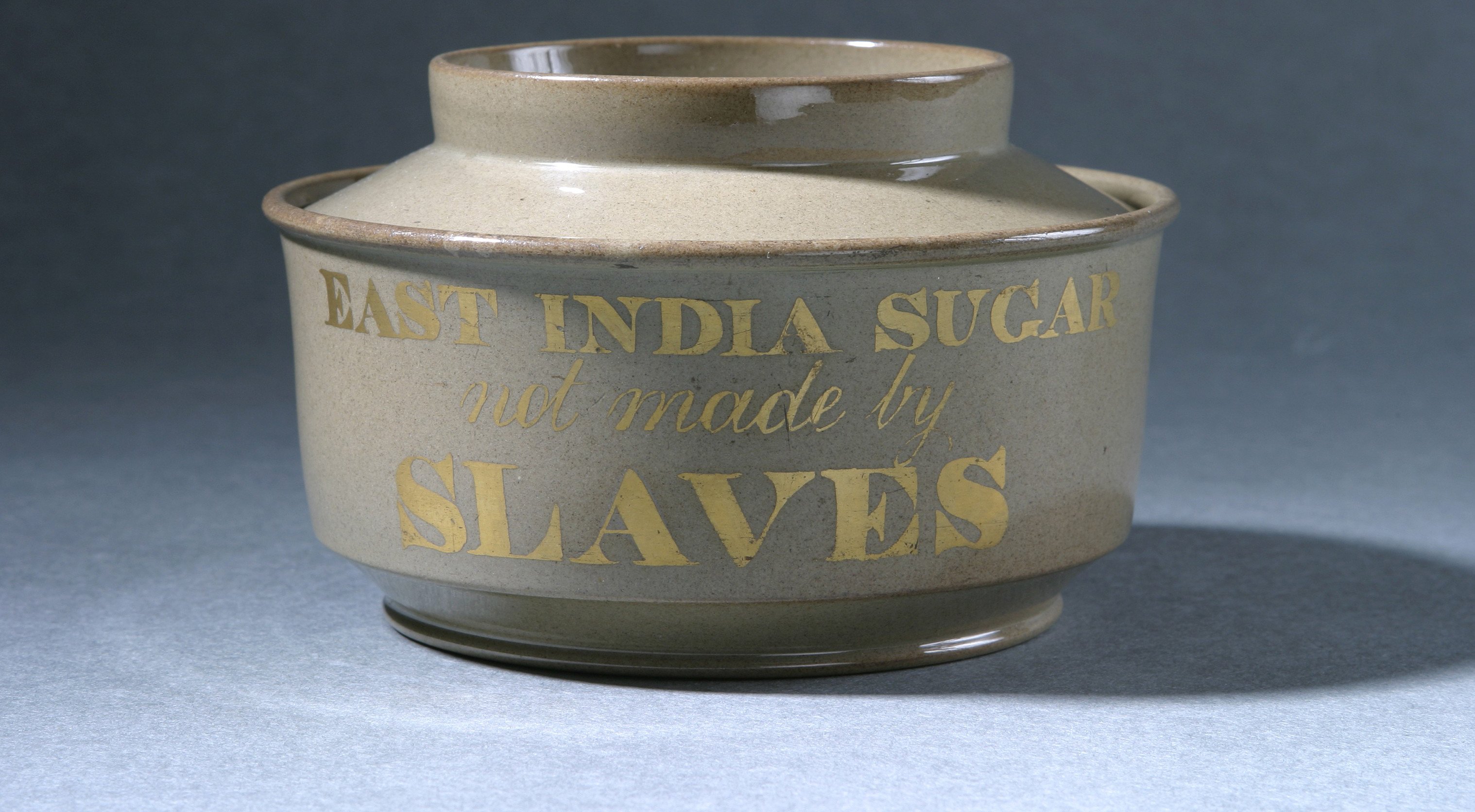Ending Slavery
For much of the 18th century, few European or American people questioned slavery. Gradually on both sides of the Atlantic a few enlightened individuals, some of them Quakers, began to oppose it.
From the 1760s, activists in London challenged the morality and legality of the slave trade. They included people who had formerly been enslaved like Olaudah Equiano, as well as abolitionist campaigners like Granville Sharp and William Wilberforce.
Women who opposed slavery took the lead in boycotts of slave-grown produce, particularly sugar. Slavery abolitionists used badges and iconic images to publicise their views, like the sugar bowl above made by Wedgewood. Enormous petitions opposing the slave trade were delivered to the House of Commons.
-
The Road to Abolition
Learn about the formation of the Committee for Effecting the Abolition of the African Slave Trade.
-
Notable Legal Cases
Read about some of the notable legal cases concerning slavery and the slave trade.
-
Slavery After 1807
Find out what happened following the Abolition Act in 1807.
-
Women Against Slavery
Find out about women abolitionists and listen to our podcasts about women's involvement in the anti-slavery campaign.
-
1834: The End of Slavery?
Slavery continued in some territories run by the East India Company as not all parts of the British Empire came under the 1833 Slavery Abolition Act.
-
Legacies of Slavery and Abolition in Listed Places
The National Heritage List for England includes our research into places with a connection to the slave trade and the campaign for its abolition.
-
Legacies of the Slave Trade
When slavery was abolished, slave owners were compensated, the enslaved received nothing. Here we link to registers of both owners and the enslaved.





